
Identifying wild edibles can be intimidating. It’s natural (and reasonable) to feel apprehensive when you’re starting out.
So I want to give you an easy project to try. Something comfortable to ease you into wild edibles.
This article will teach you how to make a yummy dessert using a plant found in many household gardens. You will have a chance to practice using plants for food, without the need to make complex plant identifications or learn special processing techniques.
Garden of Eatin’
What’s a close-to-foolproof way to identify a plant? It’s easy! You walk outside and pick the plant from your garden! If you planted it, you should be able to trust your identification.
I grow a small container garden on my patio. It supplies my table with greens, vegetables, and the occasional berry. Besides the usual suspects, I cultivate native plant species that are edible. The plants are naturally adapted to their environment and thrive with minimal care. As a bonus, I can watch them grow! This trains me to recognize their wild cousins when I’m in the bush.
I never collect my garden plants from the wild. Instead, I purchase seeds or young plants from nurseries that sell native species. This supports the nurseries while protecting my environment.
But for this project, you won’t need any outlandish plant species. Instead we will use a plant common to most household gardens: Lavender. We’ll use it to make a wonderful dip for strawberries.
Lavender
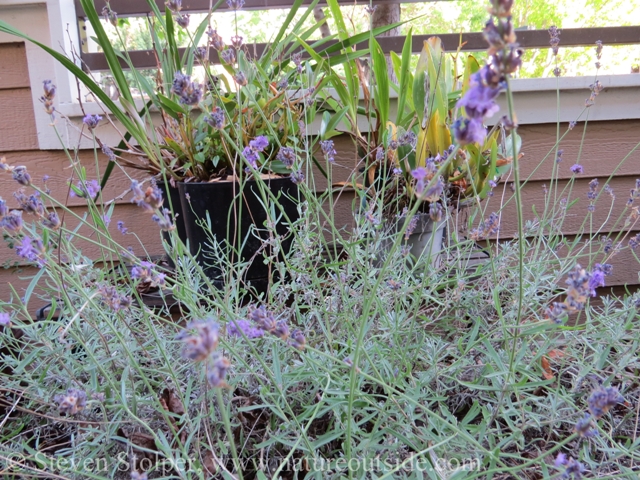
Foreground: Lavandula angustifolia ‘Sharon Roberts’
Lavender plants have a compact shrub-like form. It is not native to the United States, and was imported for its beautiful flowers and heavenly scent. The color ‘lavender’ was named for the small pale bluish-purple flowers that rise on spikes that tower like skyscrapers above the foliage.
The plant is grown commercially for its essential oil. Lavender has antiseptic properties and I use it when I make a healing skin salve. I also harvest it for its wonderful scent. The smell of lavender is one of my favorites.
Lavender has culinary uses as well. The flowers add a fragrant, slightly sweet flavor to dishes. But I recommend using very small amounts of the plant because its oils become overpowering even in small quantities. The flowers contain most of the essential oils. But sometimes I include the leaves in my cooking, just for kicks.
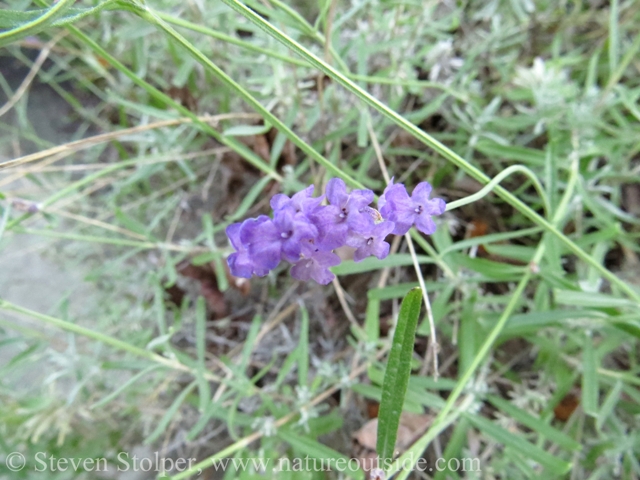
Lavender flowers are beautiful and contain essential oils
Who is Sharon Roberts?
I grow Lavandula angustifolia ‘Sharon Roberts.’ Sharon Roberts is a variety of English lavender. To me its scent has no equal. It is a compact plant with gray-green foliage. It can bloom twice a year, if you dead-head it. It blooms in June and September in my garden. Sharon Roberts is also xeric (drought resistant), and can deal with my benign neglect.
But in truth it matters little what type of lavender you grow in your garden. If you read recipes that use lavender, they often call for “culinary lavender.” But in truth there is no difference between ornamental and culinary lavender. Though some varieties taste better than others. You can experiment with whatever grows in your garden.
Step 1: Pick the Lavender
You only need a small amount. Pick two or three spikes and cut the stems low enough that you get the entire flower inflorescence and the youngest leaves at the top of the spike. You can snip the spikes with pruning shears. Or put your bushcraft knife to work, if you’re feeling adventurous.
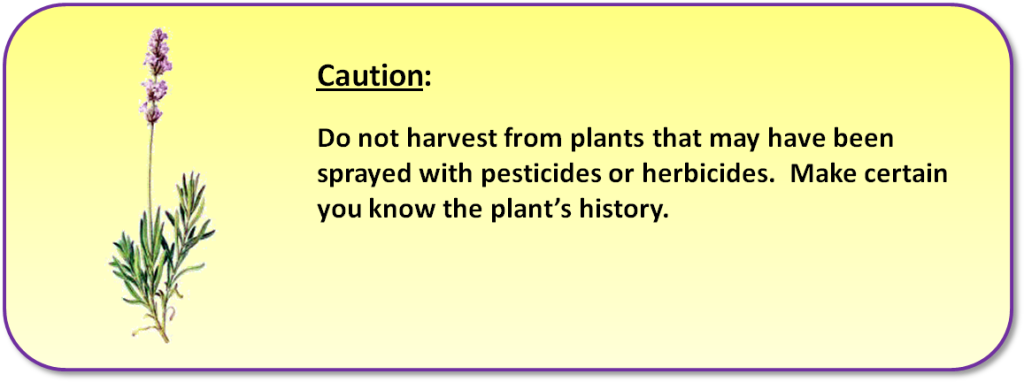
Step 2: Assemble the Ingredients
I first encountered a lavender dip recipe at Filoli, a historical museum near my home. I customized it to my liking. Feel free to experiment with your own patented formula…
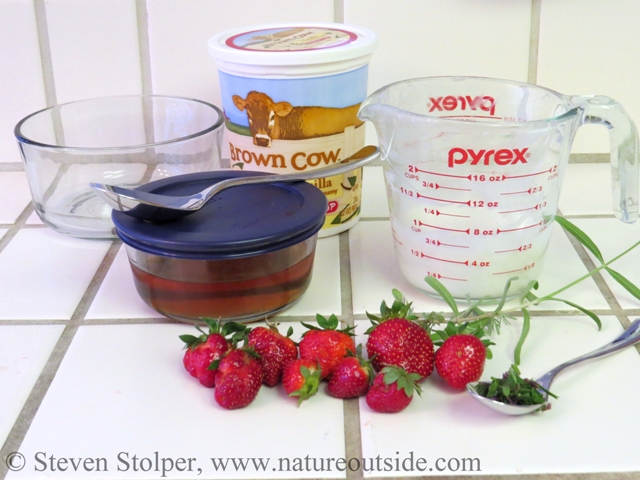
Ingredients for our lavender dip
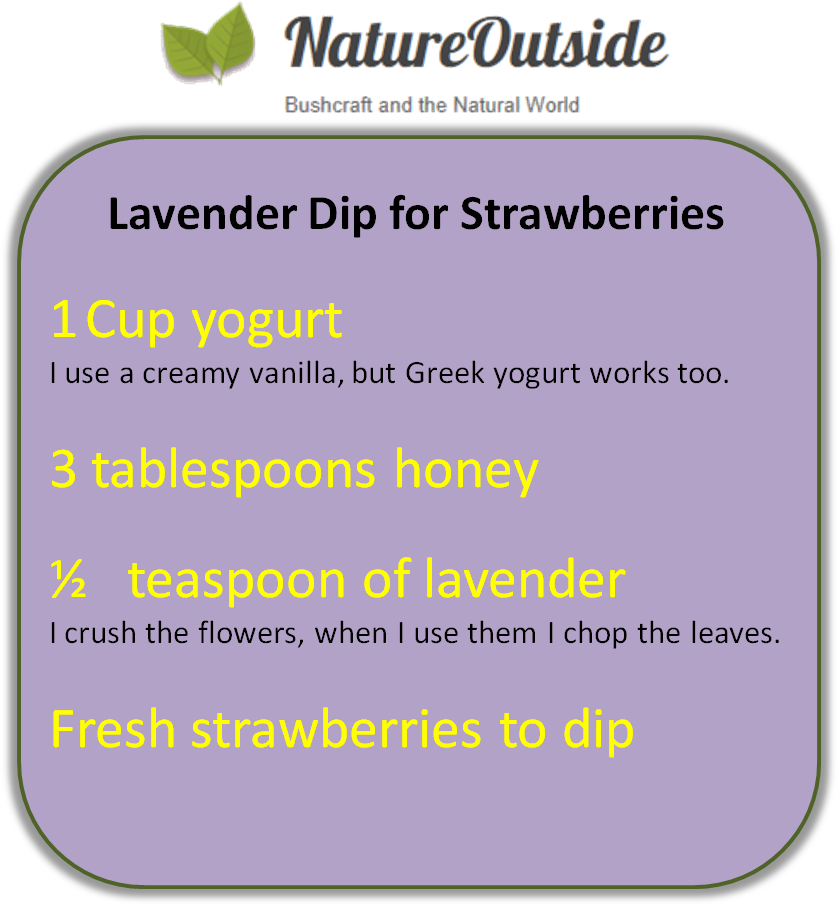
Step 3: Make the Lavender Dip
Combine the yogurt, honey, and crushed/chopped lavender in a bowl or glass storage container. Resist the urge to add to add too much lavender. More is not better in this recipe.
Mix the ingredients well with a spoon. Refrigerate for at least 2 hours to let the flavors blend.
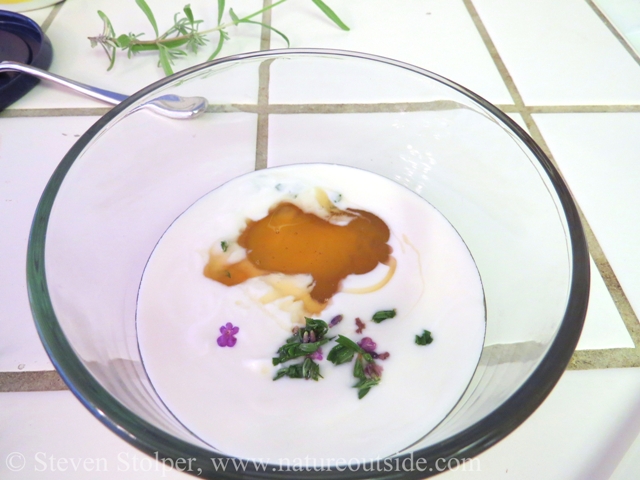
Lavender dip ingredients in a glass container, not yet mixed
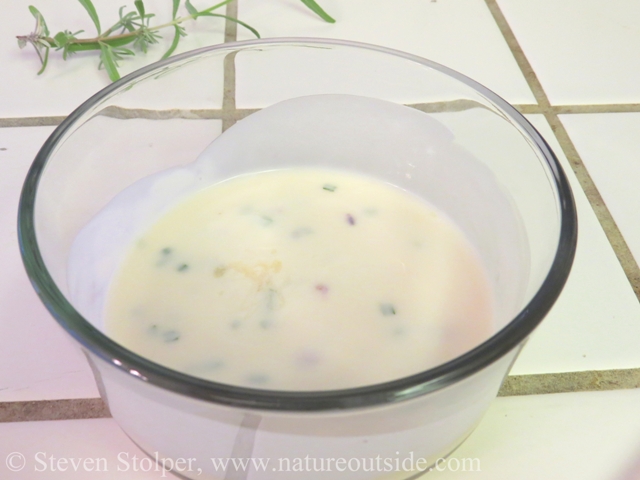
The lavender dip ingredients mixed, not yet refrigerated
Dip whole strawberries into the creamy mixture and enjoy! I find the sweetness of the honey and the fragrant lavender blend into the creamy vanilla yogurt. I think you’ll love this unique sweet treat.
But don’t overindulge. I find that ingesting too much lavender oil may cause stomach discomfort. And as with all new foods, exercise your best judgment. Lavender could be allergenic to some people.
Enjoy!
I hope this encourages you on your way to enjoying wild edible plants. Consider planting some native edible plants in your garden. They are low maintenance, water wise, and yummy! They will also help you with your plant ID skills in the wilds.
If you try this wonderful lavender dip, please leave a comment below to let me know how it turned out.
Other edibles on NatureOutside
How to Make Acorns into Food (Part 1)



Leave a Comment